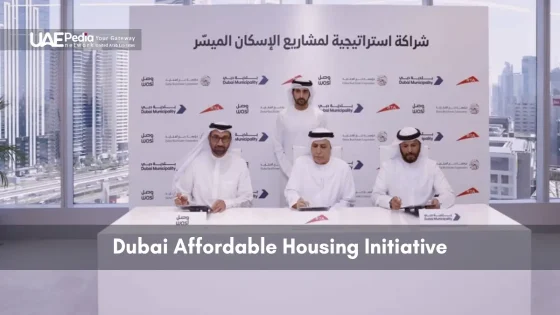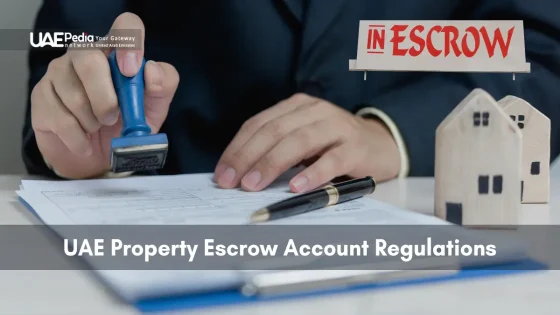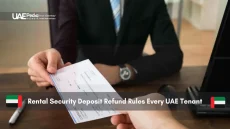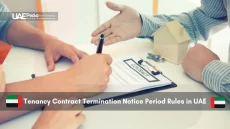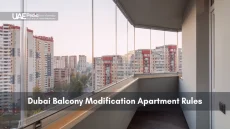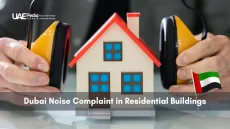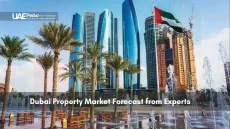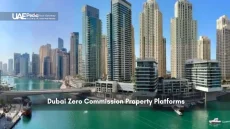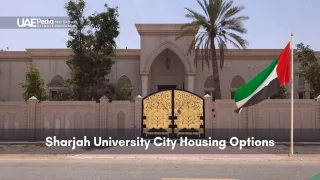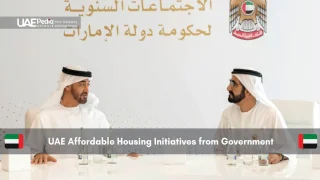What happens when a city’s glittering skyline grows faster than its neighborhoods can keep up? Property values here have climbed 15% in three years—a surge outpacing salaries for teachers, nurses, and countless professionals who form the backbone of any thriving metropolis. This tension between rapid development and livability sparked a bold new strategy to rebalance the scales.
Post-pandemic demand transformed the Emirates’ real estate landscape, with luxury towers dominating headlines. Brands like Emaar and Nakheel reshaped skylines, yet middle-income workers often found themselves priced out. Off-plan sales recently jumped 55%, but much of that growth centered on high-end units. Now, fresh policy creativity aims to diversify options without slowing progress.
The solution? A city-wide push to blend world-class ambition with everyday accessibility. By redirecting real estate funds toward mixed-income communities, planners hope to sustain economic momentum while keeping streets vibrant and inclusive. Think sunlit courtyards where entrepreneurs and families mingle, not just investor-owned penthouses.
Dubai’s 2025 affordable-housing initiative counters a 15 % price surge since 2021 by mandating that 40 % of all new stock be mid-income units, supported by a 1.46 M m² land reserve and fast-track approvals. Developers receive rent-stabilization funds and tax breaks in exchange for delivering essential services within 1 km of residences.
The program targets 12 000 additional middle-income families by 2027, integrating mixed-use zoning, transit-oriented design, and community councils to keep rents near 30 % of AED 15–25 k salaries while sustaining economic growth and local job creation.
Key Takeaways:
- 15% property price rise since 2021.
- 30% more mid-income units by 2027.
- Rent caps protect residents from volatility.
- 1.46M sqm land reserved for housing.
- Transit upgrades reduce commute times 40%.
- Mixed-income projects boost local economies.
Dubai has announced over 17,000 affordable housing units as part of its 2025 initiatives, alongside programs to bolster independent legal consultancy and enhance Arabic education, demonstrating a concrete commitment to addressing the housing affordability crisis. Ref.: “CAProperties. (2025). Dubai Announces Over 17,000 Affordable Homes. CAProperties.”
Overview of Dubai’s Real Estate and Housing Challenges
Skyrocketing rents and shrinking options—how did one of the world’s most dynamic cities reach this crossroads? Since 2002, when foreign ownership rules first unlocked property markets, developers raced to build icons rather than communities. Today, luxury towers dominate neighborhoods once meant for teachers, healthcare workers, and mid-career professionals.
Growth’s Double-Edged Sword
Major firms have focused on high-end projects, with rents in areas like Jumeirah climbing 20% last year alone. “We build not just structures, but ecosystems,” notes a spokesperson for Emaar—a philosophy reflecting the market’s tilt toward premium living spaces. This approach leaves limited inventory for those earning between AED 15,000-25,000 monthly.
“A city thrives when all its people thrive.”
The Squeeze on Everyday Life
Middle-income residents now face choices reminiscent of New York’s housing crunch: commute 90 minutes or spend half their salary on rent. Social divides deepen as expatriates and locals compete for scarce spaces near schools and transit lines. Even shared apartments in Deira now cost 40% more than pre-pandemic rates.
Visionaries like Sheikh Rashid bin Maktoum once imagined inclusive urban growth. Today’s challenge? Balancing global ambition with neighborhoods where nurses and engineers can actually live.
Read More:
Understanding Dubai Affordable Housing Initiative 2025
Imagine a city where teachers and tech innovators share sidewalks with ease. That’s the vision driving recent urban reforms aimed at balancing growth with livability. Planners are weaving inclusivity into every blueprint, ensuring communities thrive without sacrificing ambition.
Project Objectives and Policy Aims
The strategy prioritizes three pillars: fairness, accessibility, and resilience. Rental price caps aim to shield residents from volatile markets, while mixed-use zoning guarantees schools and clinics sit steps from front doors. “Growth without equity is just numbers on paper,” emphasizes Sheikh Mohammed bin Rashid, architect of the 2040 urban master plan. His team targets 30% more mid-income units by 2027—enough to house 12,000 families.
Key Strategic Measures Under the Initiative
Developers now follow revised guidelines tying permits to affordability quotas. A land reserve of 1.46 million square meters—roughly 350 football fields—has been earmarked for parks, schools, and transit-linked apartments. Partnerships with firms like Nakheel ensure projects align with the Dubai 2040 urban vision. Key moves:
- Rent stabilization funds to offset construction costs
- Fast-track approvals for projects with 40% mid-range units
- Community councils to voice local needs in planning phases
Allocation of Land and Urban Master Planning
Picture neighborhoods where green spaces and schools are as planned as skyscrapers. That’s the heartbeat of the urban master blueprint reshaping the Emirates—a playbook balancing growth with grit. At its core? A land reserve spanning 1.46 million square meters, enough space for 12 Burj Khalifas, earmarked by Sheikh Hamdan to ensure communities flourish alongside commerce.
Insights into the 2040 Urban Master Plan
Think of it as a city-building LEGO set. Planners allocate zones like puzzle pieces: housing here, hospitals there, metro lines threading through. Essential services—clinics, schools, parks—get prime spots within walking distance. “We’re coding livability into every brick,” says a Dubai Municipality engineer. The goal? Prevent urban sprawl while keeping rents realistic for teachers and engineers.
Stakeholder Roles in Land Development
Key players like the Dubai Land Department act as referees, ensuring developers hit real estate quotas for mid-range units. Private firms handle construction, but councils keep them accountable. Sheikh Hamdan’s team reviews every proposal, rejecting those that skimp on community spaces. Recent wins:
- 40% of new projects must include parks or plazas
- Fast-track permits for builders prioritizing essential services
- Tax breaks for mixed-use developments near transit hubs
“Land isn’t just dirt—it’s destiny.”
This isn’t just about buildings. It’s about bakeries beside bus stops, pharmacies facing playgrounds—the glue holding neighborhoods together. With Sheikh Hamdan’s land reserve and Rashid Maktoum’s vision, the urban master plan could rewrite what modern cities aspire to be.
Implications for Middle-Income Earners
How does a city ensure its heartbeats—teachers, nurses, innovators—can thrive amid rapid growth? Rents in core neighborhoods surged 22% since 2022, squeezing budgets for those earning AED 15,000–25,000 monthly. The 2040 urban blueprint steps in, weaving quality housing into growth plans like threads in a tapestry.
Access to Quality Housing and Essential Services
Imagine clinics and schools growing alongside apartment towers. Mohammed bin Rashid’s team mandates mixed-use communities where pharmacies and parks sit steps from front doors. A recent study shows 65% of mid-income families now prioritize proximity to transit hubs over square footage.
| Feature | Pre-2025 Developments | Post-2025 Projects |
|---|---|---|
| Essential Services Within 1km | 42% | 78% |
| Average Rent for 2-Bedroom | AED 120,000/yr | AED 85,000/yr* |
| Transit Access (Walk Score) | 55 | 89 |
*With stabilization funds applied
While the Dubai residential market has shown upward trajectory with the Residential Market Sales Price Index rising by 15.60%, forecasts suggest potential market corrections that could impact the sustainability of rent stabilization programs and affordability initiatives. Ref.: “Global Property Guide. (2023). UAE’s Residential Property Market Analysis 2025. Global Property Guide.”
Provisions for Diverse Residential Needs
From compact studios to family villas, the hamdan bin-backed strategy rejects one-size-fits-all solutions. “We’re crafting neighborhoods, not just units,” shares a city planner involved in Jumeirah’s upcoming mid-income cluster. Zoning laws now require:
- 20% of units designed for single professionals
- Community gardens in all complexes with 100+ homes
- Flexible leases for freelancers and gig workers
“A home isn’t four walls—it’s morning coffee with neighbors, safe sidewalks, knowing your paycheck stretches far enough.”
By tying bin rashid’s economic vision to everyday livability, the plan bridges divides. Projects launching this year aim to house 8,000 families while keeping rents at 30% of median income—a sweet spot for both wallets and urban vibrancy.
Infrastructure and Transportation Solutions in Dubai
Ever wonder how a city keeps moving when roads get crowded? While Dubai’s skyline gleams with ambition, its planners face a puzzle familiar to global hubs: connecting vibrant communities without gridlock. The answer lies in smart engineering and partnerships that turn sci-fi concepts into daily realities.
Innovative Measures to Ease Traffic Congestion
Meet the Dubai Loop—a proposed 93km network of climate-controlled walkways linking metro stations to homes and offices. Think of it as an urban treadmill where you’ll stroll past cafés and art installations instead of sweating through rush hour. Meanwhile, the metro’s Red Line extension—part of a $5 billion upgrade—will slash commute times to new mid-income areas by 40%.
Dubai’s extensive investment in infrastructure and transport has made the emirate into a world-leading hub for logistics, trade and re-export, with advanced transport facilities that support both economic growth and quality of life improvements. Ref.: “Invest in Dubai. (2023). Dubai as a logistics hub: the role of ports and road infrastructure. Invest in Dubai.”
Compare this to London’s Crossrail or Tokyo’s subway efficiency. Dubai’s twist? Housing clusters get priority access. “Mobility isn’t just about speed—it’s about dignity,” notes a RTA engineer working on the metro expansion projects. Early models predict these routes could serve 1.2 million daily riders by 2027.
Partnerships and Technological Advancements
When Crown Prince Sheikh Hamdan bin Mohammed greenlit tunnel deals with The Boring Company, skeptics raised eyebrows. Now, prototype routes beneath Business Bay show how underground pods could zip commuters to Downtown in 6 minutes flat. Paired with AI-powered ride-sharing apps, these systems learn traffic patterns like a chess master anticipates moves.
Key collaborations driving change:
- RTA’s pact with tech firms to launch 500 autonomous shuttles by 2026
- Solar-powered charging stations at every major transit hub
- Real-time congestion pricing modeled after Singapore’s success
“Transport shapes societies—not just streets.”
These efforts align with the Dubai 2040 vision, where 55% of residents live within 800 meters of metro or tram stations. By threading innovation through every tunnel and algorithm, the city aims to prove that even the busiest hubs can breathe easy.
Comparative Analysis with Global Affordable Housing Models
How do global cities keep their communities anchored amid soaring property values? From Singapore’s hawker centers to New York’s brownstones, urban laboratories reveal strategies worth borrowing. Let’s unpack what works—and what doesn’t—when balancing growth with grassroots needs.
Urban Experiments That Stick
Singapore’s Housing Development Board homes 80% of its population through a simple rule: prioritize access over excess. Buyers commit to living in their units for decades, creating stability rare in speculative markets. New York’s rent-stabilized apartments—covering 1 million households—show how caps can temper wild swings without stifling investment.
Hong Kong’s approach? Build up, not out. By stacking services like clinics and schools beneath residential towers, planners maximize every square foot. “The magic happens when housing policies evolve alongside communities,” notes a Singaporean urban planner. These models prove master plans thrive when residents shape them.
Rent Rules That Build Bridges
Not all rent controls are created equal. Berlin freezes prices entirely, while San Francisco allows incremental hikes tied to inflation. Dubai’s emerging strategy leans toward Vienna’s playbook: blend public-private partnerships with strict city oversight to ensure units stay affordable long-term.
| City | Policy Tool | Affordability Impact |
|---|---|---|
| Singapore | Income-linked subsidies | 72% own homes |
| New York | Rent stabilization + lottery | 50% below market rate |
| Vienna | Municipal housing trusts | 60% in subsidized units |
Key takeaway? Lasting solutions require access to transit, healthcare, and green spaces—not just four walls. As one Brooklyn tenant organizer puts it: “You can’t spreadsheet your way out of a human crisis.”
While Dubai’s property market hit $207B in transactions with rents rising up to 22.2% and property values appreciating by as much as 170% in some cases post-pandemic, ratings agency Fitch predicts Dubai’s real estate market prices could face a double-digit fall in the second half of 2025 and in 2026, creating uncertainty for long-term affordability planning. Ref.: “Reuters. (2025). Dubai real estate prices likely face double-digit fall after years of boom, Fitch says. Reuters.”
Economic and Social Impact of the Initiative
When communities thrive, entire cities transform. Annual rent hikes of 18% once strained middle-class budgets—now, fresh strategies aim to flip that script. By tethering growth to fairness, this effort could spark waves of opportunity far beyond apartment walls.
Stimulation of Local Business Growth and Job Creation
New developments aren’t just about roofs overhead. Each mid-range project generates 1,200+ construction roles—electricians, landscapers, safety inspectors. But the real magic happens after keys get handed over. Think corner bakeries staffed by residents, clinics hiring nurses who live upstairs. Forecasts predict 12,000 permanent jobs by 2027, many in sectors like retail and education.
The Dubai National Housing Policy has allocated a historic budget of AED65 billion to the Emirati Housing Program for the next 20 years, demonstrating long-term commitment to addressing housing challenges and supporting sustainable community development. Ref.: “Dubai 2040. (2023). Dubai’s National Housing Policy. Dubai 2040 Urban Master Plan.”
Ripple effects? When families save 30% on housing, disposable income flows to local shops. “Our café saw sales jump 40% after the community center opened,” shares a Deira entrepreneur. Smart policy links housing density to commercial zoning—every 100 homes trigger new storefronts.
Bridging Income Inequality and Enhancing Community Living
Mixed-income blocks dissolve invisible barriers. Vienna’s model proves this: neighborhoods blending subsidized and market-rate units see 25% higher social mobility. Here, parks and transit access become equalizers. A teacher earning AED 18,000 monthly can now bike to work alongside corporate managers.
“My kids play with friends from every background—that’s the future we’re building.”
Stable rates let families plan beyond rent checks. Consumer confidence in real estate jumped 18 points since last year, surveys show. From flexible leases to shared courtyards, these choices stitch tighter social fabric—one where ambition and belonging coexist.
Check out the below:
Final Thoughts on Dubai’s Evolving Housing Landscape
Cities, like living organisms, thrive when growth aligns with nourishment—not just vertical expansion but roots that sustain diverse life. Recent urban strategies mark a pivotal shift from transactional development to nurturing neighborhoods where teachers, engineers, and entrepreneurs coexist. By prioritizing accessible land use and quality infrastructure, planners are rewriting what modern metropolis means.
Challenges persist as population pressures mount—rents in core areas still outpace salaries for many essential workers. Success demands layered solutions: tech-powered transit networks, community-led zoning boards, and policies ensuring new towers don’t overshadow playgrounds. It’s urban alchemy, blending steel with soul.
The real magic happens when public-private collaborations reimagine shared spaces. Solar-lit courtyards become innovation hubs; metro stations double as art galleries. These experiments prove vibrant communities aren’t accidents—they’re designed with foresight and resident voices at the table.
For professionals shaping tomorrow’s skyline, staying engaged with these evolving blueprints matters. The journey toward equitable urbanism has no finish line—just milestones worth celebrating and adjusting as needs shift. Keep watching this space; the next chapter promises fresh lessons for cities worldwide.
The Dubai 2040 plan allocates 1.46 million square meters for residential projects, prioritizing mixed-use communities near metro lines and essential services. This reduces commute times while ensuring access to schools, healthcare, and green spaces—key for middle-income stability.
Developers like Nakheel and Emaar collaborate with Dubai Land Department to fast-track permits and offer subsidized land rates. These partnerships lower construction costs, enabling builders to create quality units priced for teachers, nurses, and hospitality professionals.
While Dubai doesn’t impose strict rent caps, the Rental Dispute Center monitors increases and mediates tenant-landlord agreements. The initiative also introduces long-term leases in areas like Al Furjan and Dubai South, balancing market flexibility with affordability.
Expanded metro routes to zones like Dubai Hills and sustainable micro-mobility options—think e-scooter lanes and shaded walkways—are prioritized. RTA’s AI-powered traffic systems also optimize peak-hour flows, cutting commute stress for residents.
Both groups benefit! While Emiratis receive tailored schemes like Mohammed Bin Rashid Housing Establishment support, expats qualify for mid-income units in Jumeirah Village Circle or Town Square—often through employer-linked financing plans.
Dubai’s Building Regulations Department mandates strict compliance audits, from energy-efficient insulation to earthquake-resistant designs. Third-party firms like DEWA and Trakhees conduct spot checks, ensuring even affordable units meet global livability standards.
